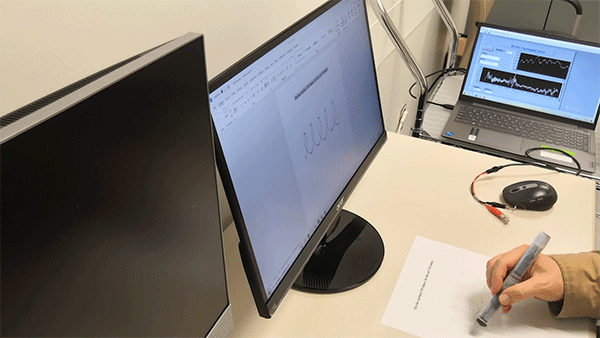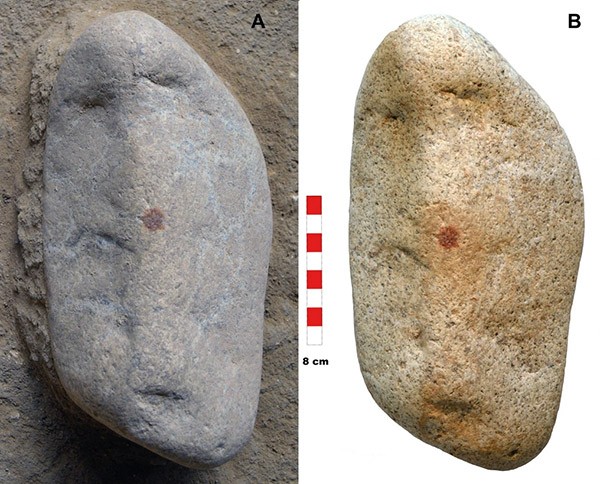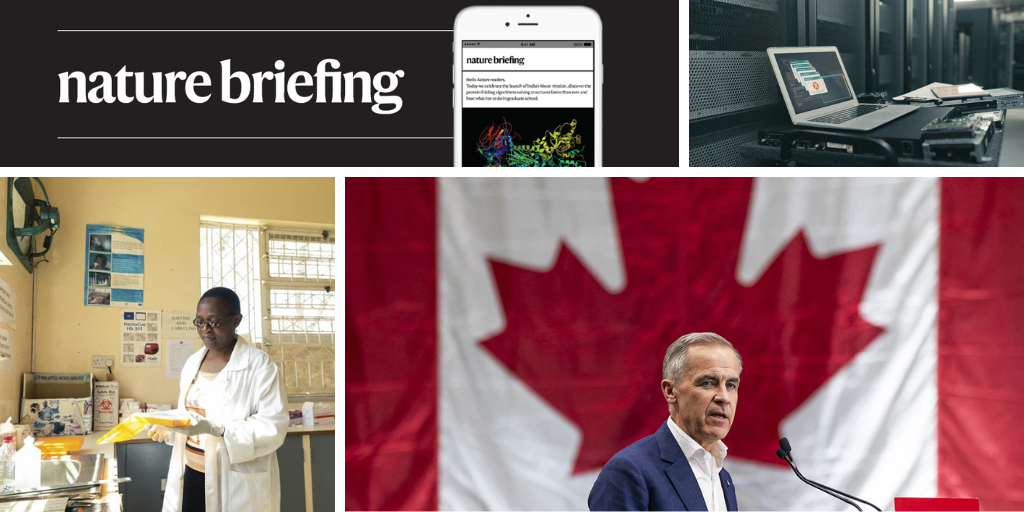You have full access to this article via your institution.
Hello Nature readers, would you like to get this Briefing in your inbox free every day? Sign up here.

Writing with this pen could help people affected by Parkinson’s disease to be diagnosed at an early stage, which would help them to access treatment sooner. (Guorui Chen et al./Nature Chemical Engineering)
A 3D-printed pen filled with magnetic ink could help to spot the hallmark tremors of Parkinson’s disease. The pen’s movement on a surface generates a voltage in a metal coil, which is recorded as a current signal. In a small trial, researchers used machine learning models to compare signals generated by people with Parkinson’s with those produced by people without the disease. After some training, one model could identify people with Parkinson’s with an average accuracy of more than 96%.
Reference: Nature Chemical Engineering paper
A spike in bot traffic is putting pressure on the websites that host journal papers, databases and other online resources. BMJ’s chief technology officer, Ian Mulvany, reported in March that “bot traffic on our journal websites has now surpassed real user traffic”. Some site owners suspect these automated programs are gathering data to train artificial-intelligence tools. The sheer volume of bot requests could jeopardize smaller ventures without the resources to put in safeguards, says zoologist Michael Orr.
Sierra Leone now accounts for three-quarters of all new mpox cases in Africa, and its health system is overwhelmed. The outbreak is driven by the variant called clade IIb, but is showing features previously associated with a different strain, clade Ib — namely an explosive spread among both men and women, rather than primarily among men who have sex with men. This suggests that clade IIb could have become more transmissible, or that the two variants are more similar than was thought. In the meantime, Sierra Leone doesn’t have enough of the vaccine doses needed to get the outbreak under control.
Image of the week

A close examination of the red ochre dot on this stone, unearthed from the San Lázaro rock-shelter in Spain, revealed that the mark was made by a human finger. This raises the tantalizing prospect that a Neanderthal maybe, just maybe, meant the dot to represent a nose (the rock, say researchers, does indeed look like a face in person). “It could represent one of the earliest human facial symbolizations in Prehistory,” write the team that made the discovery. (BBC | 4 min read)
Reference: Archaeological and Anthropological Sciences paper (David Álvarez-Alonso et al./Archaeological and Anthropological Sciences (CC BY 4.0))
Have you benefited from an exceptional mentor — or are you or a colleague supporting early-career researchers in their career development? Nominations are now open for the Nature Awards for Mentoring in Science 2025. This year, the focus is on mentors in the United Kingdom, and there are awards for lifetime achievement and for mid-career mentors. Each award comes with a cash prize of US$10,000. Find out more here.
Thanks for reading,
Flora Graham, senior editor, Nature Briefing
With contributions by Jacob Smith
Want more? Sign up to our other free Nature Briefing newsletters:
• Nature Briefing: Careers — insights, advice and award-winning journalism to help you optimize your working life
• Nature Briefing: Microbiology — the most abundant living entities on our planet — microorganisms — and the role they play in health, the environment and food systems
• Nature Briefing: Anthropocene — climate change, biodiversity, sustainability and geoengineering
• Nature Briefing: AI & Robotics — 100% written by humans, of course
• Nature Briefing: Cancer — a weekly newsletter written with cancer researchers in mind
• Nature Briefing: Translational Research — covers biotechnology, drug discovery and pharma


